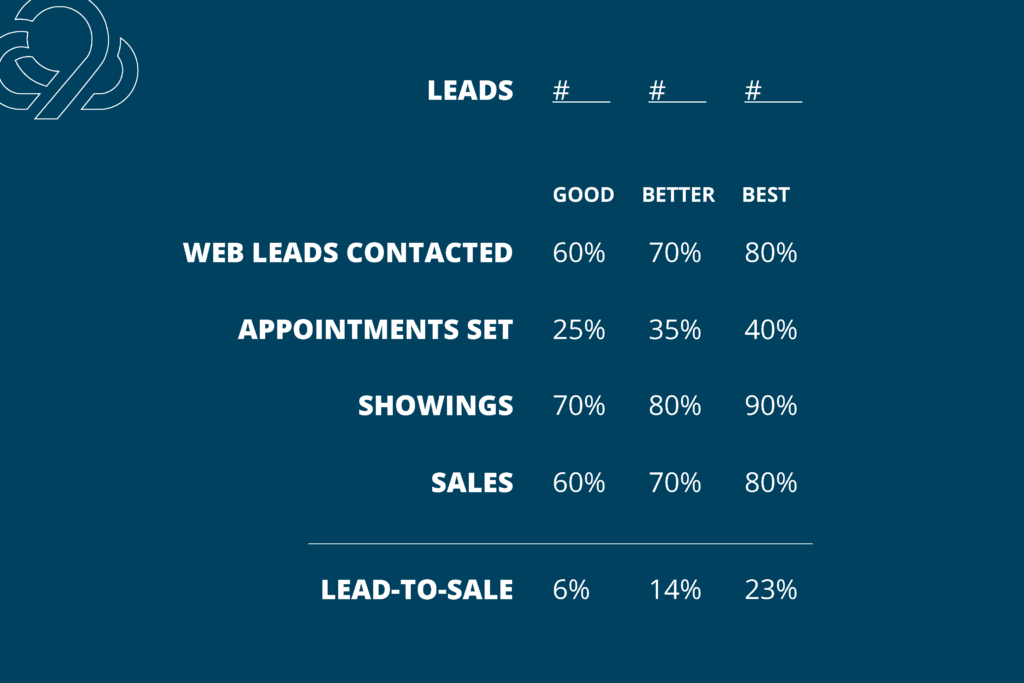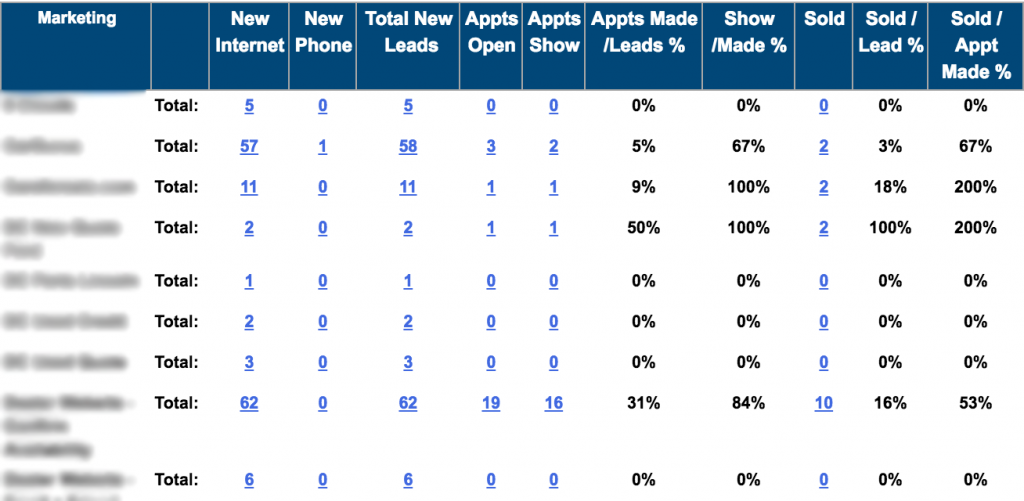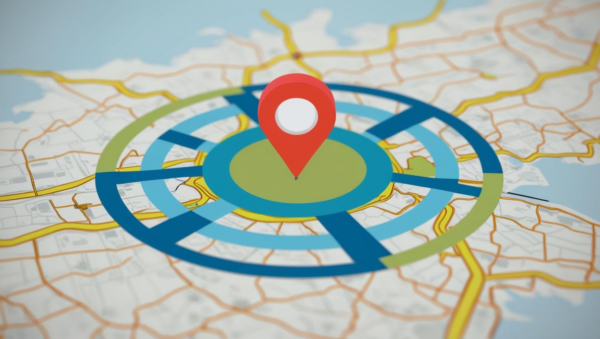
The Future of Automotive Marketing: Building Your Digital Sales Funnel
The automotive market may be growing, but competition is also increasing. Most notably, competition is no longer among car dealers alone.
When an auto dealer tries to market online, they are now in competition with other businesses vying for the attention of potential customers. Media continues to fragment from just TV and radio to dozens of digital channels.
The scattered attention of potential customers makes it harder and more expensive to reach mass audiences.
The future of automotive marketing is focusing on the people who are actively shopping — which is usually online.
These customers, known as in-market buyers, can now be reached directly through digital marketing.
This targeted approach has a better conversion rate than the traditional approach of trying to reach as many people as possible and hoping that some of them will remember you when they start shopping.
The challenge — and opportunity — for dealers is to judge their marketing by the conversion rate of their leads, not by the number of leads they attract. As competition increases in the industry, this conversion-focused approach will be even more essential.
There are two ways to grow a business: attract more leads, or do a better job of selling the leads you already have. Car dealers need to do both.
Get started by establishing your goals for conversion so that your sales and marketing teams can work together to grow your store.
Moving Digital: Create Your Sales Funnel
An auto dealer should create a digital sales funnel to judge the success of their sales and marketing teams. This sales funnel should measure how many people enter the funnel as a lead and how many of those leads end up purchasing.
Along the way, there are some important benchmarks you should check. These benchmarks make up the six steps to building a digital sales funnel:
- Leads
- Leads who can be contacted
- Appointments set
- Appointments who show up
- Sales from those appointments
- Total conversion rate of the above steps
Measure each step as a percentage, so you can identify the quickest ways to improve your digital sales process and identify the marketing efforts that have the biggest impact.

6 Parts to an Auto Dealer’s Digital Sales Funnel
Let’s walk through six parts of the digital sales funnel to understand:
- What it is
- Why it matters
- What a good result would be
- How to improve
We’ll start with the top of the digital sales funnel: leads.
1. Leads

What it is: Leads are the most familiar metric for automotive marketers. Most often, marketers are judged by their ability to generate leads for their dealerships. A lead would be any potential customer for whom you have a means of contact (e.g. phone number or email address).
Why it matters: Filling the top of the sales funnel is one way to grow a dealership. The more leads you have, the more people you have to reach out to and convert into sales. So as long as your sales conversion rate does not change, attracting more leads will lead to more sales.
What a good number of leads would be: An average number of leads would be 1% of your web traffic converting into digital leads. This would mean that if you have 10,000 web visitors a month, you should have at least 100 digital leads from your website.
Leads from third-party lead providers or other sources that do not touch your website should not be counted in that number.
An okay number of leads would be 0.5% of your web visitors converting into leads. A great conversion rate would be 1.5% of your web visitors. So:
- Below average: 0.5%
- Average: 1%
- Above average: 1.5%
How to improve: The simplest way to get more leads is to make it easier for digital shoppers to give you their information. Using chat windows, forms for shoppers who are not sure what they want, and short forms will all increase the number of leads you generate.
The second way to get more leads is to get more traffic. The majority of marketing dollars are spent on this type of lead generation, which can range from TV commercials to online ads.
The best way to improve traffic generation (and thus lead generation) is to create a Google Analytics goal for a form submission. Then, look at the analytics to learn which channels are creating the most leads and what your cost per lead is. Spend more money and time on the sources that create the most leads.
Even better, follow those leads into your customer relationship management (CRM) system to see who purchased, and spend time on the sources that generate the most sales.
2. Leads Contacted

What it is: Not all digital leads can actually be contacted. Some might submit a fake email address or phone number. Leads contacted refers to the percentage of your leads who can successfully be contacted. If a lead does not answer their phone or email, they are still considered a “lead contacted” if their email and/or phone are valid.
Why it matters: If you can’t contact a lead, you can’t sell them. Also, using these criteria to determine a good or bad lead will give you a consistent metric to work with. Too often, leads are marked as “bad” simply if they don’t answer their phone or email. This label should be reserved for people who literally cannot be found or do not exist.
What a good conversion rate for leads contacted would be:
- Below average: 60%
- Average: 70%
- Above average: 80%
How to improve: Ask for only the contact information you really need, and give visitors the option to choose how they want to be contacted. They might prefer a text to an email or phone call, for example.
If you’re asking a visitor to give you their phone number or email address, it should be because they want a reply to a specific inquiry. A form that is long and only blocks visitors from getting basic information will often result in bad information as customers become frustrated with the process.
3. Appointments Set

What it is: When a lead is contacted, the best next step is for them to make an appointment at the store. Appointments set refers to the percentage of leads contacted who schedule an appointment.
Why it matters: Getting a potential buyer to come to your dealership dramatically increases your chance of making the sale. It also allows your store to confirm their contact information and identify the best vehicle for their needs.
What a good conversion rate for appointments set would be:
- Below average: 25%
- Average: 35%
- Above average: 40%
How to improve: Specific language on the phone or in an email should be used — and tested — to identify the best way to book appointments.
Use a script for phone calls and a template for emails. Even better, use two scripts, and compare each month which one works best. Then try another version the next month so that you continually improve your conversion rates. When your staff feels comfortable with the script and template, add in personalization for each individual customer.
Technology can also help you book more appointments. Marketing automation software can track what people are looking at on your website and when they are clicking your emails. Contact them while they are active on your site or looking at your email, so you have a better chance of getting them on the phone.
You can also use email to follow up with form submissions by directing them to book an appointment. There are many tools, like Calendly and HubSpot Sales Pro, that will allow a shopper to set an appointment themselves. That means you can create appointments after hours or if you can’t get ahold of leads.
4. Appointments Shown

What it is: Appointments shown refers to the percentage of appointments set that actually come to the dealership.
Why it matters: Getting customers to show up for those appointments makes it easier to make a sale. A personal relationship will trump digital communication.
What a good conversion rate for appointments shown would be:
- Below average: 70%
- Average: 80%
- Above average: 90%
How to improve: Reminders are essential to improve your appointments shown metric. Technology can help provide text or email reminders.
Even better is a reminder from a manager. Have your sales manager call every appointment the day before they are scheduled to show up.
Finally, make appointments shown a key focus of your staff. Send an email to your employees every morning with a list of the appointments scheduled to come that day. Everyone on the floor should be looking for these shoppers and ready to welcome them.
5. Appointments Sold

What it is: After someone comes to their appointment, the percentage of those shoppers who buy a vehicle are appointments sold.
Why it matters: This is the final step of the automotive sales process. Your sales team needs to close the deal so that all your hard work in generating and converting the lead results in a sale.
What a good conversion rate for appointments sold would be:
- Below average: 60%
- Average: 70%
- Above average: 80%
How to improve: The sales techniques that your sales reps are trained to use will come in handy at the bottom of the funnel. The strategy will change depending on how your store prices vehicles (one price, negotiating, etc.). In general, work to make the process efficient, transparent, and respectful.
6. Total Conversion of Digital Leads

What it is: Your total conversion is the pot of gold you are looking for. This is the percentage of digital leads who buy a vehicle.
Why it matters: Knowing your total conversion will drive your marketing decisions and enable sales forecasts. If you know that 10% of digital leads purchase a vehicle, you know that adding 100 leads will result in 10 additional sales.
Identify the average value of a sale for your store, and then determine if your marketing activities will bring in more value than they cost. That’s the definition of a positive return on investment (ROI).
What a good total conversion rate of digital leads would be:
- Below average: 6.3%
- Average: 13.7%
- Above average: 23%
How to improve: Improve your total conversion rate by improving the weakest step of your sales funnel. If you are below the average conversion for one of the steps, improve that area of your business.
By focusing on the lowest-performing steps of your sales funnel, you will have the biggest impact on your total conversion.
How to Measure Your Digital Sales Funnel
Your CRM enables your store to quickly find your sales funnel numbers, so you can easily keep track of what’s working (and what’s not).
Here’s how to pull the data for three select CRMs.
1. VinSolutions
VinSolutions makes it easy by having your sales funnel on the Dealer Dashboard labeled as Internet Sales Funnel.
You will find each step of the sales funnel named and color-coded. Note that the number of sales may exceed the number of appointments if shoppers purchase without making an appointment.

2. DealerSocket
Click Management > Analytics > Internet Reports > Internet ROI. Then, set your date range.
You will see each step of the sales process and its corresponding conversion rate, as shown here:

3. eLeads
Click Reports > Internet lead > Internet lead reports > Closing ratio and appt totals.
Then, select your criteria for the report. Choose your date range, and set the Report By as “Source” and the Up Type as “Internet,” as shown here:

Then, you will see all the data you need to fill in your sales funnel, as shown here:

Digital Sales Funnels for Your Sales Team
The best way to improve your marketing is by calculating and improving your store’s digital sales funnel. After identifying those six marketing metrics and your areas of improvement, you can then take that same strategy to the individual sales level.
Each salesperson currently operates under the same general sales funnel. They all own a certain number of leads, who they must nurture with the goal of generating a sale.
A better approach would be to create a unique funnel for each salesperson.
You will quickly identify that each salesperson has a different skill. Some will be better at booking appointments, while others will excel at closing the sale.
With individual sales funnels, you can decide which employees should be responsible for different steps of the funnel. You can also objectively provide feedback on how they can (and should) improve.
Quantifiable goals enable objective job performance reports. Tell your employees the goals you are trying to achieve, and provide the support to help them improve.
One word of caution: watch for salespeople who mark leads as “bad” just to improve their sales funnel. Your leads contacted goal should minimize this activity, but make sure all employees understand what a bad lead really is (i.e. unable to contact). That way, the data gathered throughout the sales funnel will truly be accurate.
Focus Digital Marketing on the Right Customers
It doesn’t matter if you generate more leads if you can’t actually sell to those leads.
Fortunately, digital marketing can specifically target customers who are shopping for a vehicle or who need service. By focusing efforts on the right people, digital marketing can help you save money and increase conversion.
The competition for attention is increasing for all industries, including automotive. The sales environment for car dealers will eventually slow, so now is time to focus on in-market sales and marketing.
Find potential buyers, build your dealer’s own customer database, and track customers with marketing automation so that you can reach out with the right message when leads are shopping.
A clear sales funnel will measure what works and identify the best ways to focus your marketing and sales efforts.
Start measuring now. You can grow your store by attracting more leads or by doing a better job of selling to the leads that you have.
Your digital sales funnel will help you do both.
Get More Leads with a Digital Sales Funnel
We get it: Selling vehicles is your number-one goal. But how people buy cars is moving online and that means shifts in your sales funnel.
We can help get your vehicles in front of the interested shoppers in your area — even if you have to work with an approved vendor.
If you’re ready to achieve real results with a trusted digital marketing ally, contact us for a custom digital marketing proposal for your dealership.
Drive More Revenue »




